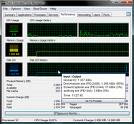 DLL file (Dinamic Link Libraries) is a library Windows. Whatever you need Windows, will be sought in this DLL file type.
DLL file (Dinamic Link Libraries) is a library Windows. Whatever you need Windows, will be sought in this DLL file type.When an application program is executed, DLL files that accompany it will be called into the memory (RAM) and continue to be there for the program is still running. Sometimes, some programs leave this DLL file in memory, which of course will meet the memory space.
Well, that memory space feel more relieved, follow these steps.
1. Click the "Start", then type "regedit" to open the Windows Registry Editor window.
2. Find the address of the registry "HKEY_LOCAL_MACHINE \ Software \ Microsoft \ Windows \ CurrentVersion \ Explorer".
3. In that address, create a new string value named "AlwaysUnloadDLL".
4. Give the value String value 1 on this. If at any time you want to disable it, simply change the value to 0.
5. Close the Registry Editor window and reboot the computer.
From now on, caching DLL files will be avoided and the memory space for other programs grew larger.
Faster file access
NTFS is the file system that operating system built with the foundation NT. Because Windows 7 uses the kernel, or core of the OS Windows NT, the operating system also supports NTFS.
Now, as the OS that can use the NTFS file system, it requires a functioning cache holds information about files contained in a folder. Like what does it work?
When you open a folder for the first time, Windows will read and contain detailed information about the folder that you open it in a cache. This information will then be used if you open the same folder in the future so that the process will be faster.
With this cache increases, of course, the speed of your Windows folder in the reading of a will increase as well. To do this, practice the following steps.
1. Run the Registry Editor via the "Start", and type: regedt32.
2. Go to the sub key HKEY_LOCAL_MACHINE-SYSTEM-CurrentControlSet-Control-FileSystem.
3. In the sub key "FileSystem", click the right mouse button on the right window, then click "New> DWORD (32 bit) Value".
4. Rename the new DWORD Value with the name "NtfsMftZone Reservation".
5. Right-click DWORD Value NtfsMftZone this Reservation, then select "Modify".
6. Fill in the Value Data requested by the value 2.
7. Click "OK", close the Registry Editor window, then restart the PC.



0 comment:
Post a Comment